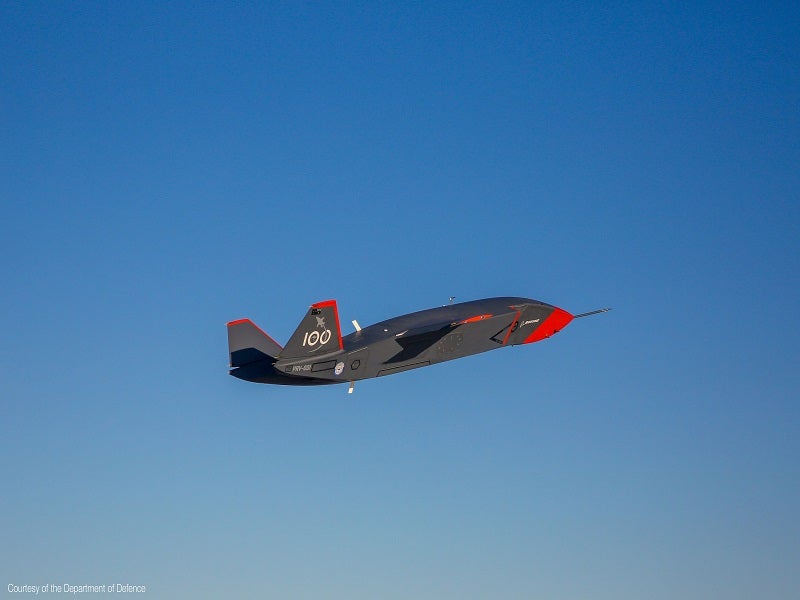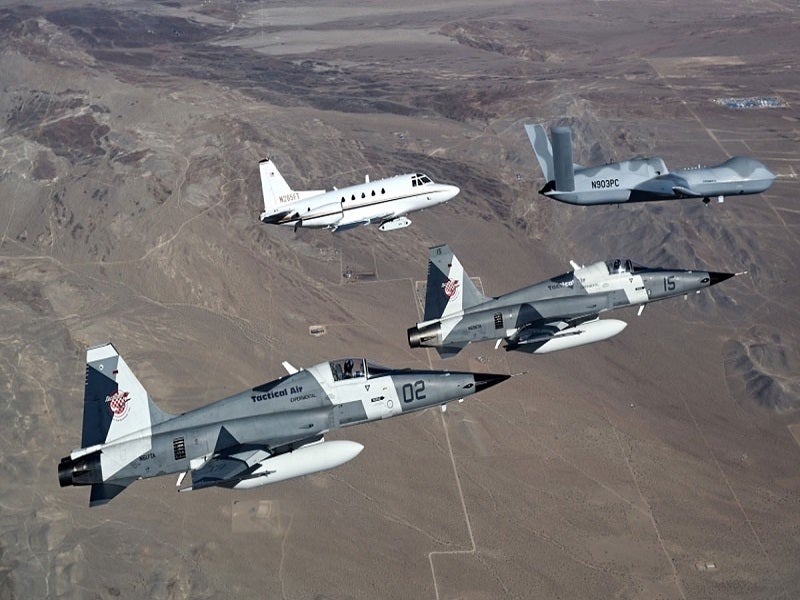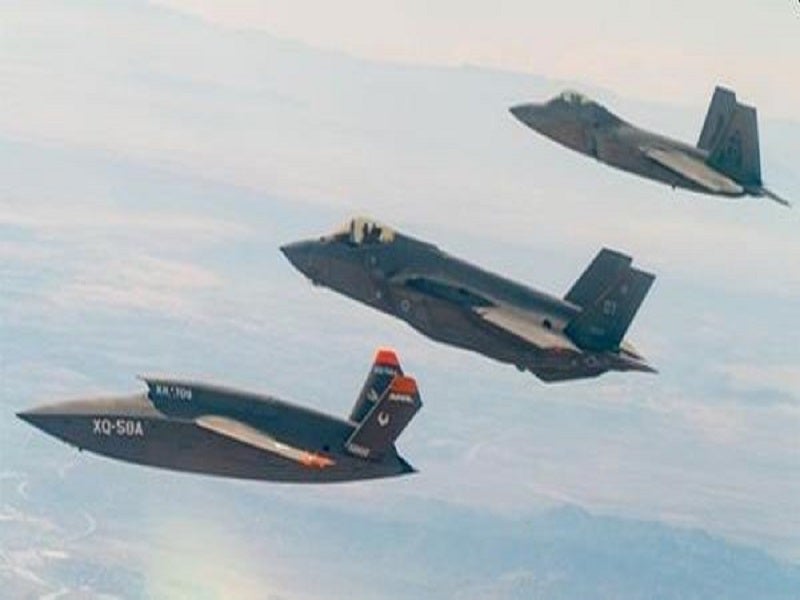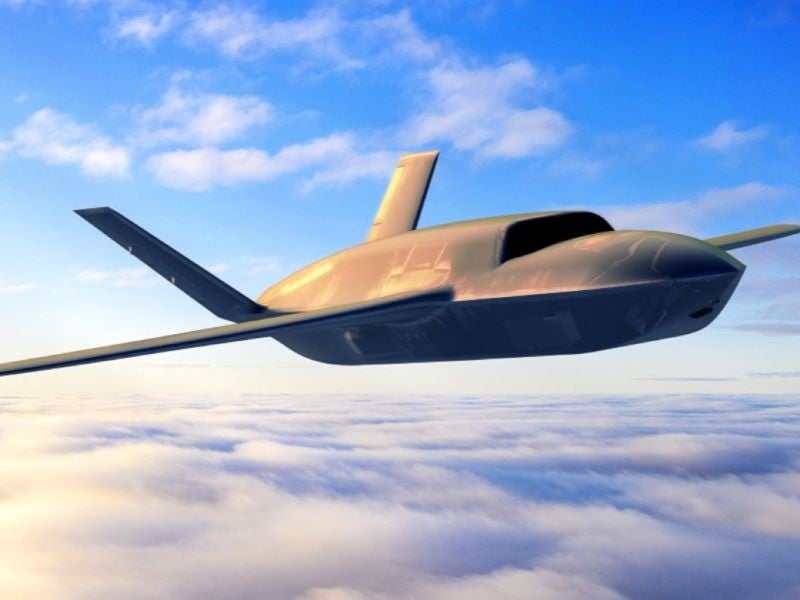The Collaborative Combat Aircraft (CCA) programme proposed by the US Air Force (USAF) is a multi-pronged initiative to test, develop and implement new autonomous and manned-unmanned aircraft teaming concepts.
It is intended to rapidly deploy large numbers of autonomous unmanned aircraft, officially designated as CCAs, to team with the fifth or sixth-generation manned fighter aircraft as part of the USAF’s wider Next Generation Air Dominance (NGAD) programme that envisions a system-of-systems approach with the next-generation fighter aircraft, weapons, sensors, networking and battle management systems to maintain air superiority in the coming decades.
Deploying collaborative, mission-focused CCAs at a large scale is seen as a cost-effective and pragmatic solution to possess a formidable airpower capacity in response to proliferating hostile stealth fighters.
The CCAs can harness cutting-edge disruptive technologies such as autonomy, machine learning and AI to maximise the safety and performance of current and future fighter fleets for agile combat employment.
In April 2024, the US Air Force selected Anduril and General Atomics Aeronautical Systems to design, manufacture and test the production representative flight test articles of the CCA programme for the US Air Force Life Cycle Management Center.
GA-ASI’s production representative design under the CCA programme will be based on the XQ-67A. The maiden flight of the XQ-67A CCA prototype aircraft took place in February 2024 to validate the concept pioneered by the Air Force Research Laboratory (AFRL) as part of the Low-Cost Attritable Aircraft Platform Sharing programme.
Collaborative Combat Aircraft programme details
In March 2023, the USAF Secretary revealed the plan to pair at least 1,000 uncrewed CCAs with advanced manned fighters in the near future, in his keynote speech titled “One Team, One Fight” at the 2023 Air Force Association Warfare Symposium held in Colorado.
The plan is tentatively based on the assumption of teaming two CCAs with each of the 200 NGAD platforms and 300 F-35s.
The USAF’s budget proposal for the fiscal year 2024 includes a budget request of $490m to accelerate the development, experimentation and testing of CCAs.
It also includes a $72m fund request for an experimental operations unit to test fly CCA concepts and explore organisational structures, policy doctrines, maintenance concepts and training and facilities requirements for the implementation of CCA technologies.
In May 2023, the House Armed Services Subcommittee on Tactical Air and Land Forces underscored the importance of cost-effective, manned-unmanned aircraft teaming concepts and directed the USAF Secretary to submit a report on the schedule and plans for funding, development, testing, and large-scale manufacturing of CCAs to the congressional defence committees by October 2023.
According to Air and Space Forces Magazine, the USAF has mapped out spending requests totalling $6bn for research, development and experimentation efforts under the CCA programme through to the fiscal year 2028.
The first batch of CCAs is expected to enter the USAF’s inventory in the late 2020s, with the early operational capability goals under the programme expected to be achieved by 2030.
The USAF is also exploring international partnerships, including potential foreign military sales, under the CCA programme. The partnerships are further expected to bring affordable mass at scale while enabling horizontal integration and interoperability between the partners.
CCA design and operational capabilities
The proposed CCAs will comprise a new breed of significantly less expensive and highly autonomous, mission-focussed, unmanned collaborative combat aircraft to fly along with fifth-generation and newer human-crewed fighter jets.
Equipped with a mission-customisable mix of sensors, weapons and other tactical systems, the CCAs will be different in form and function.
They will utilise cutting-edge AI-driven autonomous software to enable seamless and effective collaboration and augment the performance of manned combat aircraft by providing comprehensive situational awareness, greater lethality, and improved survivability in highly contested environments.
CCAs will be interoperable with different types of USAF aircraft and designed to operate either as a manned aircraft teammate, an individual autonomous platform or as part of a swarm of collaborative drones without direct human supervision.
They can perform different missions, ranging from carrying weapons and flying ahead of other aircraft to provide intelligence, surveillance and reconnaissance and relay valuable early warning and evade detection, to electronic warfare and striking targets either on their own or with the rest of the force.
Fielding multiple collaborative aircraft can ensure comprehensive battlespace surveillance and agile combat employment from different altitudes at different angles, making mission planning more dynamic and flexible.
Collaborative Combat Aircraft development details
Collaborative Combat Aircraft is the USAF’s official designation for the popularly known loyal wingman uncrewed aircraft systems that are intended to accompany crewed fighter aircraft with similar flight characteristics and execute orders assigned to them by pilots.
The CCA development will leverage some of the existing crewed-uncrewed teaming efforts, including the Defense Advanced Research Projects Agency’s Air Combat Evolution programme, the AFRL Skyborg programme and Boeing Australia’s MQ-28A Ghost Bat (Airpower Teaming System) project.
The ACE programme seeks to foster air combat autonomy performance by demonstrating AI-powered human-machine collaboration in aircraft dogfighting.
The objective of the Skyborg programme was to create an open autonomous aircraft teaming architecture and develop a modular and universal core autonomy control software, allowing the low-cost production and deployment of multiple collaborative drone variants alongside crewed fighter jets.
The CCA development will be based on the Skyborg autonomy core system. The USAF’s proposed 2024 budget includes $51.7m for the transition of the Skyborg autonomous flight technology to CCA platforms.
Skyborg autonomy testing details
Boeing, GA-ASI, and Kratos were contracted to provide unmanned combat aerial vehicle (UCAVs) prototypes for testing the Skyborg autonomous core system, in 2020.
GA-ASI’s MQ-20 Avenger, Kratos XQ-58 Valkyrie and Boeing MQ-28 Ghost Bat are the three high-performance UCAVs that have been tested as part of the Skyborg programme.
The Variable In-flight Simulation Test Aircraft (VISTA) X-62A, an AI-piloted and heavily modified version of F-16D Block 30 Peace Marble Il aircraft that was previously designated NF-16D, was also used to support autonomy testing for the Skyborg programme.
Details of Project Venom
The USAF proposes to start a project named Viper Experimentation and Next-gen Operations Model (Venom) to equip six F-16 Viper fighter jets with AI-enabled self-flying capability. It is intended to test and refine the autonomous software for the CCA technology.
To initiate the project, the USAF has requested $50m in the 2024 budget proposal.
Potential contenders for the CCA programme
Boeing’s MQ-28A Ghost Bat, which achieved its first flight in February 2021 and was developed as part of the Royal Australian Air Force’s Airpower Teaming System (ATS) programme, is one of the possible contenders for the CCA programme.
Kratos has developed a family of high-performance, CCA-type uncrewed teaming aircraft, including Kratos Air Wolf Drone, UTAP-22 Makos and Kratos XQ-58A, each optimised for different mission capabilities.
Similarly, following the MQ-20 Avenger’s successful demonstration of autonomous capabilities, the GA-ASI introduced the Gambit autonomous collaborative platform in March 2022.
The company’s Gambit family of unmanned collaborative combat aircraft include the Gambit 1-ISR, the Gambit 2-Air-to-Air, the Gambit 3-High-Fidelity Trainer and the Gambit 4-Combat Recon.







